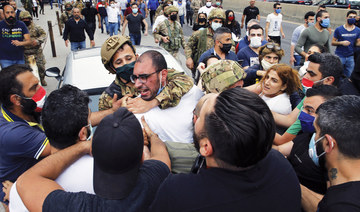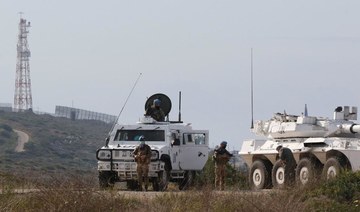BEIRUT: Lebanese journalist Maryam Seif Eddine, known for being a strong critic of Hezbollah, on Monday claimed she and her family had been violently attacked and issued with death threats.
The 29-year-old writer told Arab News that Hezbollah loyalists had targeted her family home in Burj El-Barajneh, in the southern suburbs of Beirut, two days ago.
During their ordeal, Eddine alleged her brother’s nose was broken, her mother was physically assaulted, and she received death threats.
The reporter said it was the second time her family had been the target of an attack within a month after one of her other brothers received blows to his head from sharp implements during an assault by three people, one of whom she claimed was a member of Hezbollah.
Eddine added that despite promises made weeks ago by a Hezbollah official to investigate the matter nothing had been done and said that an unresolved local family dispute with Hezbollah could have compounded the situation.
“The matter later turned into incitement against us in our area and among our relatives as I was writing more actively against Hezbollah in the newspaper I work for and on social media. I have been receiving threats and insults to oppress me and my family,” she added.
Eddine, a journalist since 2016, said: “I oppose the ruling political authority, and Hezbollah is a party to this authority. I criticize the practices of every party. It seems that my family’s decision to install surveillance cameras outside our house to protect ourselves from attackers has provoked them, leading to the recent attack under the pretext of destroying the cameras.
“When we found that we might get killed, we decided to speak up, and I was advised to keep a low profile for now and reduce my criticism.”
She pointed out that when she called her local police station to ask for protection for her family, her request was turned down due to lack of staffing.
Activist, Ali Al-Amin, who claimed that he had been attacked on more than one occasion by Hezbollah-linked people, told Arab News: “These attacks reflect Hezbollah’s dualism and confusion.
FASTFACT
Lebanese journalist Maryam Seif Eddine alleged that her brother’s nose was broken, her mother was physically assaulted, and she received death threats.
“One minute, the party resorts to the law like it did last week to sue some opponents on the pretext that they were inciting sedition, and the next moment it is taking the law into its own hands — whether directly or indirectly.
“Hezbollah has always resorted to accusing its opponents of working for Israel, the US, or foreign embassies. It has mobilized its electronic armies to launch (online) campaigns against them over the past 15 years. There is much evidence for this.
“At the same time, the party has been stopping any allegation against any of its members from reaching the Lebanese official courts. It also disparages these allegations, as is the case with the party’s stance toward the Special Tribunal for Lebanon,” he said.
“Hezbollah insists that its environment be cleansed of its opponents, and we cannot forget how it resorts to using the residents (of Hezbollah-controlled areas) to get its messages through. Hezbollah used this method against UNIFIL (UN Interim Force in Lebanon) forces as well as others.
“Hezbollah prohibits its members from entering state police stations if they are summoned in connection with any incident, and police stations themselves do not summon any Hezbollah member. The matter requires prior approval from Hezbollah’s security committee before going to the police station,” Al-Amin added.
Hezbollah last week filed lawsuits against former MP Fares Souaid and the Lebanese Forces party, accusing them of inciting sedition. On Monday, former Lebanese Prime Minister Fouad Siniora blamed Hezbollah for exposing Souaid to increased security risks.
The former premier said: “Hezbollah, which is capable of acting on the security and judiciary levels without being held accountable, aims to silence people and act with absolute freedom in all directions – without anyone criticizing it or asking it any question about its influence and control over the state’s departments and apparatus and its control over its line of action and its work.”





























